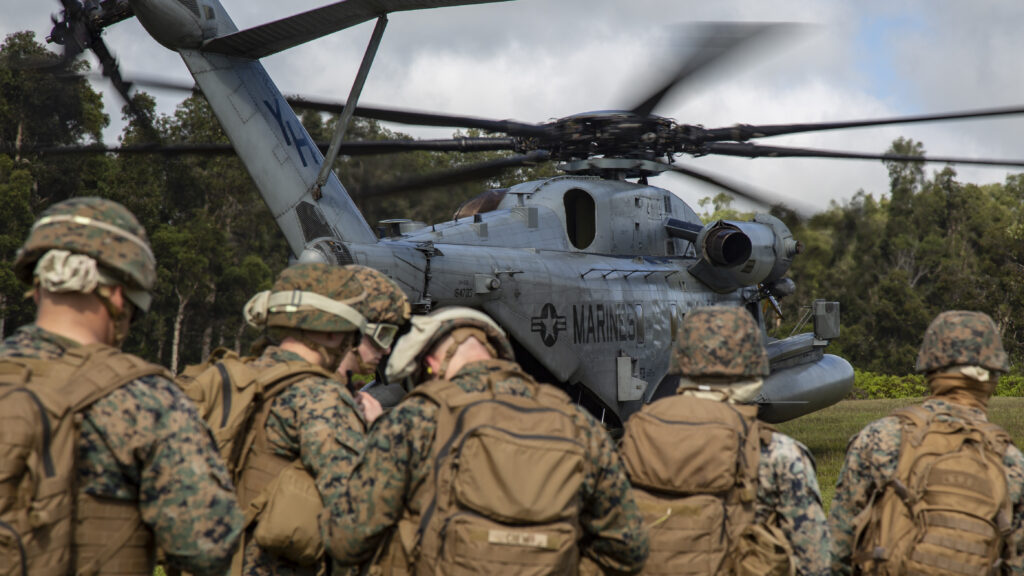
ARLINGTON, Va. — The U.S. Marine Corps has deactivated two helicopter squadrons in its march toward Force Design 2030, but one of the squadrons will be reactivated later this year, the service said.
Marine Heavy Helicopter Squadron 463 (HMH-463) — a CH-53E Super Stallion squadron known as Pegasus — was deactivated on April 21 at Marine Corps Air Station Kaneohe Bay, Hawaii. The unit, which had been based in Hawaii since 1971, had been drawing down over the year and transferring its helicopters to other squadrons.
Marine Light Attack Helicopter Squadron 367 (HMLA-367) — a unit known as Scarface — had operated AH-1Z Viper and UH-1Y Venom helicopters from Kaneohe Bay since 2012. It was deactivated on April 22, also at Kaneohe Bay.
However, HMLA-367 will be reactivated later this year at Marine Corps Air Station Camp Pendleton, California, where four other HMLA squadrons are stationed with Marine Aircraft Group 39.
The two squadrons are the second and third to be deactivated as part of Force Design 2030, the Marine Corps concept to build a lighter, more agile force able to operate and survive inside an enemy’s targeting zone. An MV-22B Osprey squadron, Marine Medium Tiltrotor Squadron 166 (VMM-166), was deactivated late last year.
The Corps still maintains two MV-22B squadrons at Kaneohe Bay — VMM-268 and VMM-363 — with Marine Aircraft Group 24. The service plans to establish a new KC-130J Super Hercules squadron at Kaneohe Bay to support the mobility of Marine forces in the Pacific.
- BlueHalo to Test C-UAS System on Marine Corps JLTV - April 29, 2024
- USS George Washington Deploys to U.S. Southern Command, Eventually Headed to Japan - April 26, 2024
- SECNAV Advocates Increased Legal Immigration to Increase Shipbuilder Workforce - April 23, 2024



